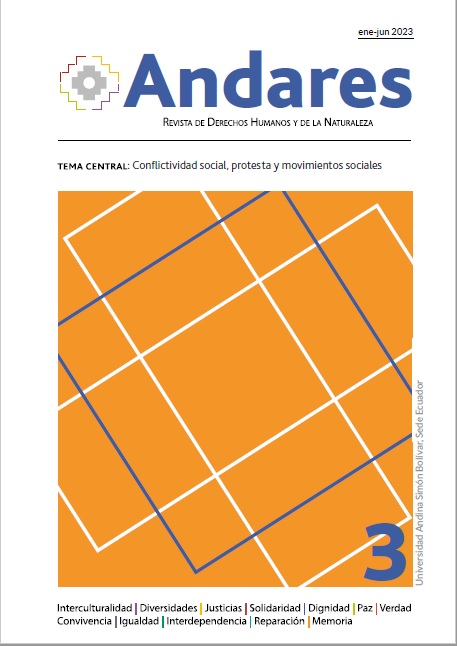Photojournalism, a Pacifying Instrument of Collective Memory and Cultural Identity of the Awá People in the Department of Nariño
DOI:
https://doi.org/10.32719/29536782.2023.1.5Keywords:
photojournalism, documentary photography, cultural identity rights, pueblo Awá, collective memory, peacemaking instrumentAbstract
Within the Colombian state, communities have generated processes of resistance and cultural survival through pacifying means of collective memory, such as documentary journalism, portraying collective memory scenarios of our indigenous communities in favor of their worldview and oral tradition. This article will be developed in two special sections, explaining the importance of photojournalism and responding to the following problem. Why can documentary journalism be considered a pacifying instrument of collective memory in favor of remembrance, valorization, and restructuring of the right to the cultural identity of the Awá community (Nariño)? Consequently, emphasis will be placed on documentary journalism through the observation and interpretation of the historical memory of the armed conflict in Colombia, which has influenced the ways of living of the Awá community, highlighting documentary photography as an instrument of peace and Relevant collective evocation in the Post-conflict, which would allow the remembrance, restructuring, and valorization of the right to cultural identity which would be approached, from the perspective of the SIDH (Inter-American System of Human Rights) and based on Gadamer’s aesthetic theory. Therefore, the stages portrayed and invested in photography will highlight part of social memory.
Downloads
References
Castellano, Ulises. Manual de fotoperiodismo: Retos y soluciones. Ciudad de México: Universidad Iberoamericana, 2003.
Colombia. Constitución Política. Gaceta Constitucional 116. 20 de julio de 1991.
Colombia Corte Constitucional. Sentencia T-025/04. 22 de enero de 2004.
Gadamer, Hans-Georg. Platos dialektische Ethik und andere Studien zur platonischen Philosophie. Hamburgo:
Felix Meiner Verlag, 1968.
Gobernación de Nariño. Plan de desarrollo departamental: Mi Nariño, en defensa de lo nuestro, 2020-2023.
Pasto, CO: Gobernación de Nariño, 2020.
López, María Carmen. “Arte como conocimiento en la estéticahermenéutica”. Endoxa 10 (1998): 325-50. https://bit.ly/42nO1jh.
Organización de los Estados Americanos. Protocolo Adicional a la Convención Americana sobre Derechos Humanos en Materia de Derechos Económicos, Sociales y Culturales: Protocolo de San Salvador. 17 de noviembre de 1988. OEA/Ser.A/44.
Ruiz, Osvaldo. “El derecho a la identidad cultural de los pueblos indígenas y las minorías nacionales: Una mirada desde el sistema interamericano”. Boletín Mexicano de Derecho Comparado 40, n.° 118 (2007): 193-239. https://bit.ly/3pdI0r5.
Unesco. Actas de la Conferencia General, 25.a reunión: Volumen 1. 17 de octubre-16 de noviembre de 1989. https://bit.ly/3qa1j54.
Vilches, Lorenzo. La lectura de la imagen: Prensa, cine, televisión. Barcelona: Paidós, 1983.
Villaseñor, Enrique. La fotografía periodística mexicana en el marco de la Bienal de Fotoperiodismo y de las nuevas tecnologías: Reflexiones, propuestas conceptuales y reseña histórica. Ciudad de México: Universidad Autónoma Metropolitana, 2015.






